Neck And Shoulder Pain Help
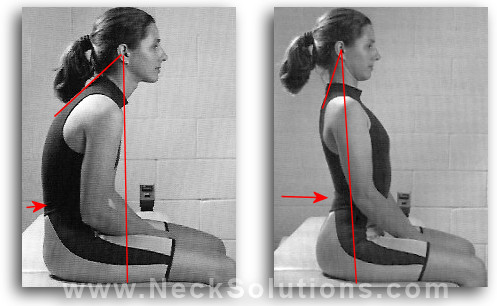 Are your neck and shoulders stiff and painful when waking in the morning? Does the pain come on suddenly after an activity or working? You are not alone, about 70% of individuals will have neck pain symptoms during their lifetime. So, here is some neck and shoulder pain help tips.
Are your neck and shoulders stiff and painful when waking in the morning? Does the pain come on suddenly after an activity or working? You are not alone, about 70% of individuals will have neck pain symptoms during their lifetime. So, here is some neck and shoulder pain help tips.
While there are obvious causes, like the whiplash type injury of a rear end collision, most likely it is due to many years of normal, overuse or misuse of the neck affecting the muscles in the shoulders as well. Just by the way we go about our daily activities, we can unknowingly contribute to neck and shoulder pain.
Generally, keeping your head balanced over the shoulders helps promote a neutral posture, without any leaning to the sides, forward or backward. A typical problem is seen with forward head posture. Try to consciously notice the position of your head throughout the day. You may find, without realizing it before, that your head is in a forward or rotated position during different activities, even while you are relaxing in bed or on the sofa.
Let’s go over some simple tips to maintain a better neck posture during various activities that can help reduce tension in the neck and shoulders:
Neck And Shoulder Pain Help: Tips
1) Using a computer or sitting at a desk. Whether you are working or just having fun, we tend to gravitate towards a screen or slump in the seat. Take a little time to make sure you can keep your head balanced over your shoulders by making some adjustments. If your chair is adjustable, make sure it is set at a height where your feet are resting on the ground. If it is too high and cannot be adjusted, use some books or a foot rest. If it is too low, which does not allow your thighs to be level with the floor, use a comfortable seat rest or get a new chair. You should be able to sit with your back against the back part of the chair, using pillows for back support if necessary to achieve this.
When sitting or working at a computer, the monitor and keyboard must be adjusted to maintain postural balance. Keep the monitor at eye level and the keyboard where your forearms are level with the ground. If using a laptop, you can get a full size keyboard and plug it in to have more flexibility with positioning. Regardless of your set-up, it is still important to get up to stretch for a few minutes, at least every half hour. This is one of the best tips for neck and shoulder pain help.
2) Using a phone. If you are spending time on the phone, a headset is a simple solution to keep your hands free to work while talking without holding the phone between your neck and shoulders, which can bend the head and strain muscles and joints.
3) Reading. Reading often places the head in a forward and downward position. As your eyes get tired, this tends to increase. When sitting, try to maintain an upright posture, holding the book or using a book stand if necessary. Even using a pillow to raise the height of the book can make a difference. Reading in bed is particularly troublesome. We often pile up pillows, forcing the neck into a bent position. Try sitting up straight or using a specially designed wedge pillow for optimum positioning
4) Walking. When standing, forces affect your posture from the ground up. Wearing high heels forces the body to compensate by holding the head and neck forward, which places stress on the neck and shoulders. This may be one of the reasons women tend to experience more neck and shoulder pain than men. Make sure you are aware of correct standing posture tips.
5) Carrying a pocketbook. Make sure you have a pocketbook, bag or backpack that is light as possible. One sided carrying of heavy bags can place the entire body off balance. If you need to carry a heavy bag, use one that has wheels and a handle. A fanny pack or backpack that places the weight on the hips instead of the shoulders and upper back. If you must carry a bag over one shoulder, switch shoulders often.
6) Driving. Posture when driving is very important, especially with the risk of increasing the severity of an accident causing whiplash neck pain symptoms. The position of your headrest can help reduce your chances of injuring your neck. Keeping the headrest close to the head and the top level with the top of your head minimizes the risk of injury. A car neck pillow can help relax the neck muscles. To keep the muscles of the back active and helping to support the neck and shoulders, a good seat cushion can help on long drives.
7) Lifting. Everyone is pretty much aware that improper lifting can hurt the lower back, however, correct lifting principles also relate to prevention of injury to the neck and shoulders as well. When lifting overhead, keep the neck straight without tilting it down or up, keeping the object close to avoid shoulder strain. Strengthening the muscles of the arms can also help.
8) Watching Television. Sit at a reasonable distance to maintain a neutral head posture and sit straight without having to rotate the head for extended periods of time. Often a u-shaped neck pillow can help.
9) Some individuals suffering from chronic symptoms, especially women, will need to do some strengthening exercises for the neck and shoulders shown to help reduce neck and shoulder pain in the long term.
- A 2019 study in BMC Public Health concluded that a high prevalence of shoulder and neck pain was reported by elementary school students reported. This study found that improper sitting positions, dysfunctional school furniture, too much homework, and difficulty in viewing the classroom board, were risk factors associated with neck and shoulder pain.
- A 2021 study in the International Archives of Occupational and Environmental Health indicates factors in the workplace like temperature, asymmetrical weight bearing, forward head movement) and wearing vision correction glasses were significantly associated with neck/shoulder problems and visual symptoms.

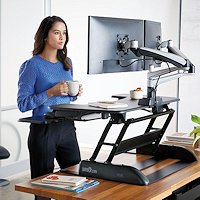 Ergonomic Aids
Ergonomic Aids Cervical Pillows
Cervical Pillows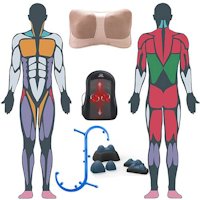 Muscle Therapy Tools
Muscle Therapy Tools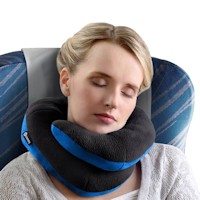 Special Pillows
Special Pillows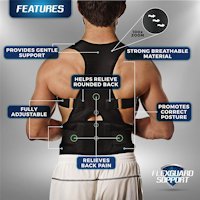 Posture Braces
Posture Braces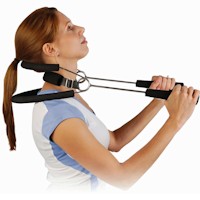 Neck Stabilization
Neck Stabilization